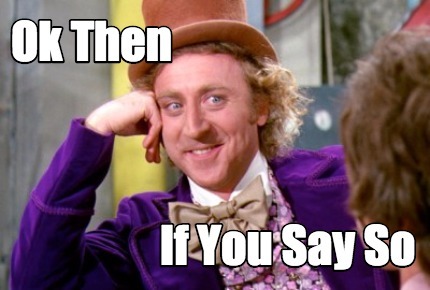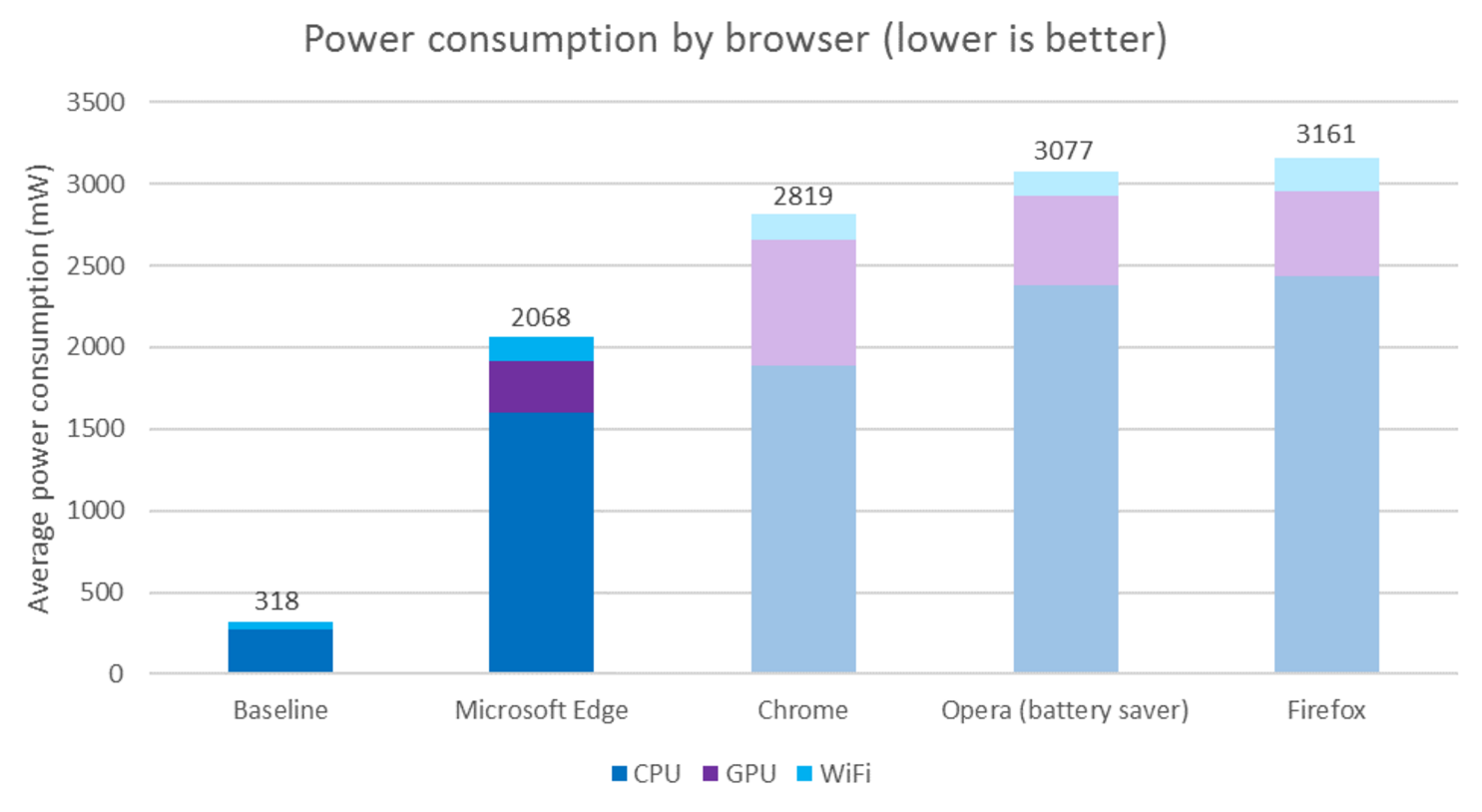Microsoft again boasts energy efficiency Edge

Illustration from the official Opera blog, where a Norwegian company commented on tests conducted by Microsoft.
Almost all Microsoft programs used to have an ambiguous reputation - often too slow, incompatible with standards, consuming a lot of memory and buggy. With the exception of a few outstanding versions, this all applies to Internet Explorer.
But Microsoft did a good job, so the smart Edge browser in Windows 10 compares favorably with its clumsy ancestor. Edge standards support is almost as good as Firefox (Chrome is far ahead). Edge has some features that neither Firefox nor Chrome can boast of. For example, support for H.265 and Dolby Digital. In terms of download speed, rendering speed and memory consumption, the Edge is also not too inferior to the leaders.
There is one parameter by which Edge generally surpasses Opera, Firefox and Chrome (according to Microsoft). This is energy efficiency, that is, battery saving. An important feature for laptops. Microsoft is not tired of emphasizing this Edge browser advantage.
')
For the first time, the PR department of Microsoft published a proud statement about the Edge's superiority in energy efficiency in June of this year . Redmond company has developed its own test, which includes opening sites, scrolling articles, watching videos, opening new tabs for each task. Then a test with a list of standard tasks was launched in each browser under Windows 10, opening a list of popular sites: Facebook, Google, YouTube, Amazon, Wikipedia, etc.
It turned out that Edge's power consumption in milliwatts is supposedly 36-53% less in comparison with Chrome, Opera (in power saving mode) and Firefox.

Opera quickly responded to loud Microsoft statements. “Like most other programmers, we love it very much when someone offers to measure. If we were beaten in such a test, we consider it a bug, ” said the guys from Opera. They complained that Microsoft did not publish the full methodology, so that they could not repeat the tests. But they made their own measurements - and it turned out that Opera Developer (39.0.2248.0) with a built-in ad blocker and power saving function runs on a single battery charge 22% longer than Microsoft Edge (25.10586.0.0), and 35% longer than the last at that time, Google Chrome version (51.0.2704.103). Tests were conducted on a laptop Lenovo Yoga 500, 14 ″, i3-5005U, 4GB, 500GB HDD, under Windows 10, 64-bit.

Unlike Microsoft, Opera’s test could be repeated and verified. Automation of tasks was carried out through WebAPI events, the battery charge was measured once a minute - via
IOCTL_BATTERY_QUERY_STATUS ( help ). The Opera test was much simpler: just opening 9 sites on different tabs and automatic scrolling in each tab every 30 seconds while simultaneously playing a leisurely Norwegian video of 9 hours and 49 minutes.Microsoft responded to the allegations and published a code to automate its test for Windows 10 .
Google and Mozilla stayed away from these clashes until recently, but Google developers also accepted the challenge. The new version of Chrome 53, which was released in early September, was highly optimized code to reduce the load on the CPU and reduce power consumption in different modes of the browser. On this occasion, the Chrome developers have published a separate post in the official blog . But they did not want to measure with benchmarks or were afraid.
With the release of Windows 10 Anniversary Update, Edge Browser has also made a number of improvements .
Three months after the June PR campaign of Microsoft, it was time to measure again. Now on the updated versions of browsers. On September 15, 2016, Microsoft released the results of the second round of comparative energy efficiency tests for Edge, Opera, Chrome and Firefox. The Edge browser was again in first place, although the gap from Chrome was reduced to 24%.

The latest browser versions, except Firefox 48, took part in the measurements. Supposedly, because of the bug, the web driver had to use the previous version, that is, Firefox 47.
The following browsers participated in the tests.
Microsoft Edge 38.14393.0.0
Google Chrome 53.0.2785.101 m (64-bit)
Firefox 47.0.1
Opera 39.0.2256.71 (battery saver enabled)
operating system
Windows 10 Pro 14393.105 rs1_release
Test equipment
Processor: i5-6300U @ 2.4GHz 2.5GHz
Memory: 8G
Intel HD Graphics 520
The testing methodology is detailed in a separate document . It contains the exact sequence of tasks that were performed in the browser. Note that the test is performed on different sites, but at the same time a separate tab is always open, where a video from YouTube called “Microsoft Design: Connecting Makers” is played in the background.
The code for automation, as already mentioned, is published on Github .
Let's see what Opera and Google will answer to Microsoft’s next attempt at benchmarking. But no matter who takes what place, the progress that almost all browsers demonstrate from version to version on energy efficiency of work is pleasing. The following diagram shows the power consumption in milliwatts for a test task in a Microsoft test in the June and September versions of each browser.

As you can see, Chrome and Opera have made the most progress. Let's see what the results will be in the next round. Perhaps it will take place with the release of the Redstone 2 update for Windows 10, which is scheduled for spring 2017.
Source: https://habr.com/ru/post/355146/
All Articles